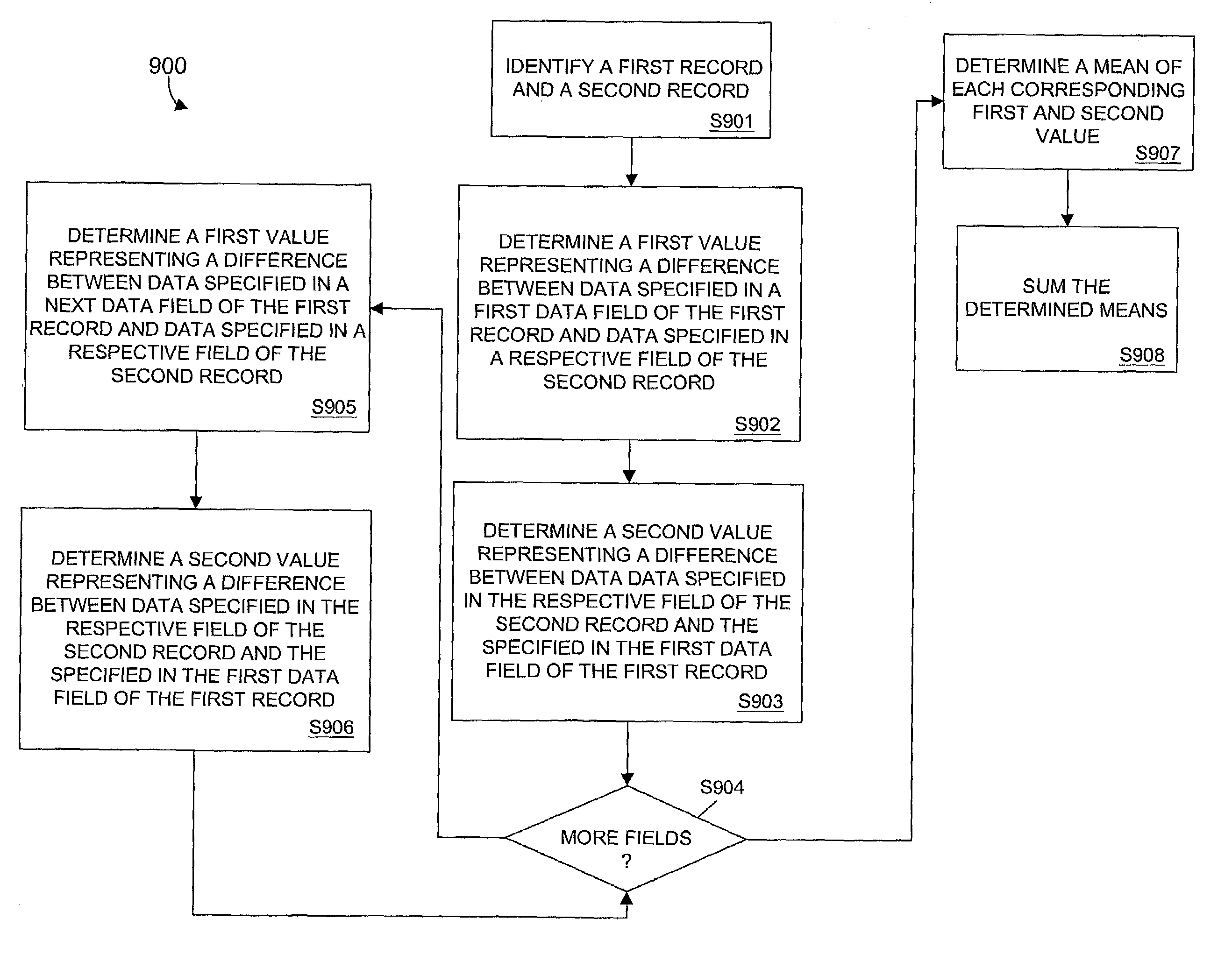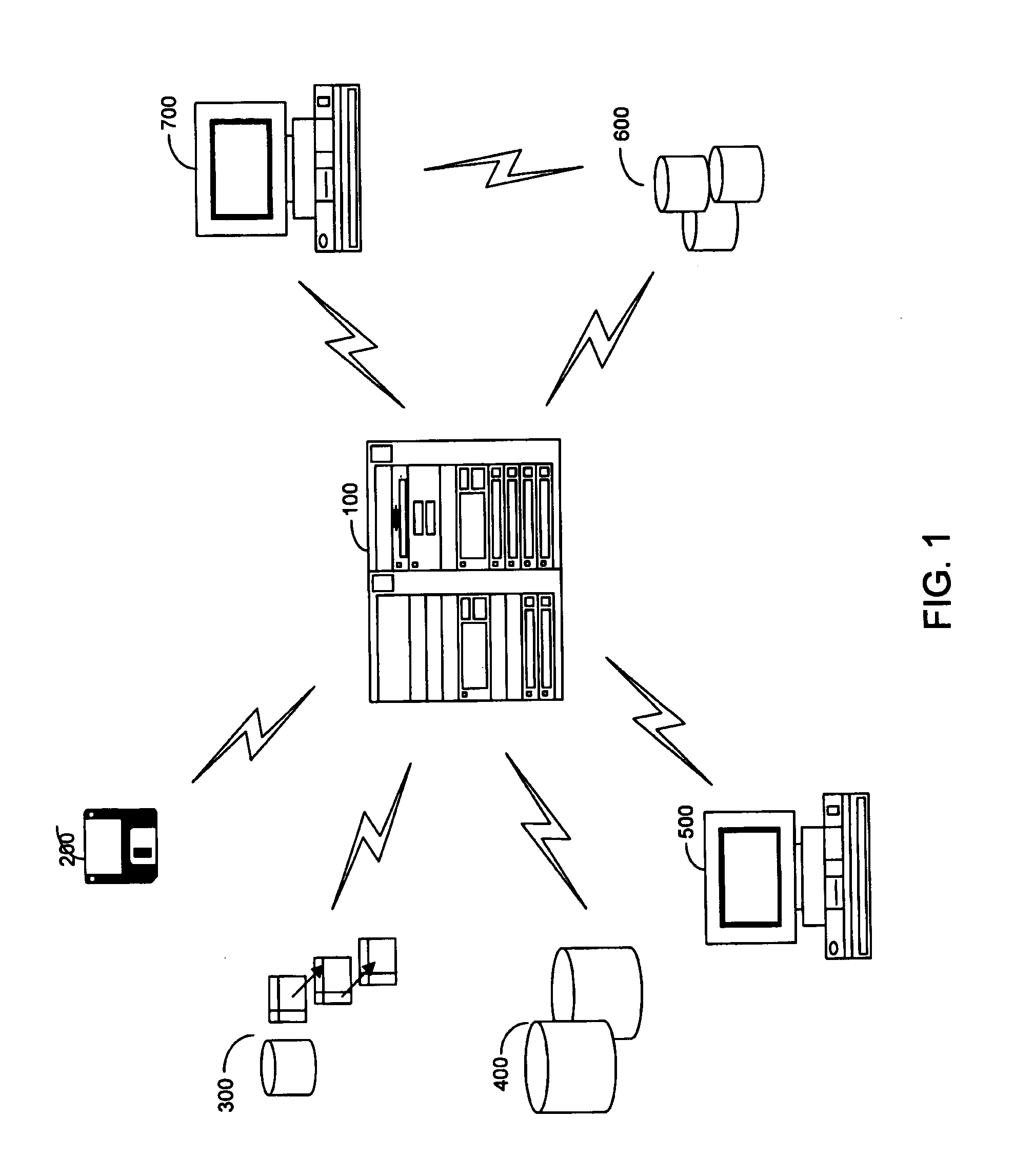Deduplication system
a data and system technology, applied in the field of data processing systems, can solve problems such as inability to solve problems caused by duplication data, and inability to properly analyze customer behavior, so as to reduce the number of data comparisons
- Summary
- Abstract
- Description
- Claims
- Application Information
AI Technical Summary
Benefits of technology
Problems solved by technology
Method used
Image
Examples
Embodiment Construction
[0032]System Architecture
[0033]FIG. 1 illustrates an architecture of a generic system utilizing data warehouse 100. Data warehouse 100 may be utilized as described above to store current and historical data related to a particular business. The data may be stored in a manner that promotes data uniformity and accessibility. Data warehouse 100 is depicted by a mainframe server in FIG. 1, but may comprise any device or devices capable of performing process steps attributed to data warehouse 100 herein. According to one of many possible examples, data warehouse 100 is an IBM RS / 6000™ server including a plurality of processors and executing the IBM AIX™ operating system and the Universal™ database management system. Data warehouse 100 may provide data warehousing services for one or more entities. For simplicity, the present discussion will be limited to a single entity.
[0034]According to the data warehousing system depicted in FIG. 1, operational data is initially received from external...
PUM
 Login to View More
Login to View More Abstract
Description
Claims
Application Information
 Login to View More
Login to View More - R&D
- Intellectual Property
- Life Sciences
- Materials
- Tech Scout
- Unparalleled Data Quality
- Higher Quality Content
- 60% Fewer Hallucinations
Browse by: Latest US Patents, China's latest patents, Technical Efficacy Thesaurus, Application Domain, Technology Topic, Popular Technical Reports.
© 2025 PatSnap. All rights reserved.Legal|Privacy policy|Modern Slavery Act Transparency Statement|Sitemap|About US| Contact US: help@patsnap.com



